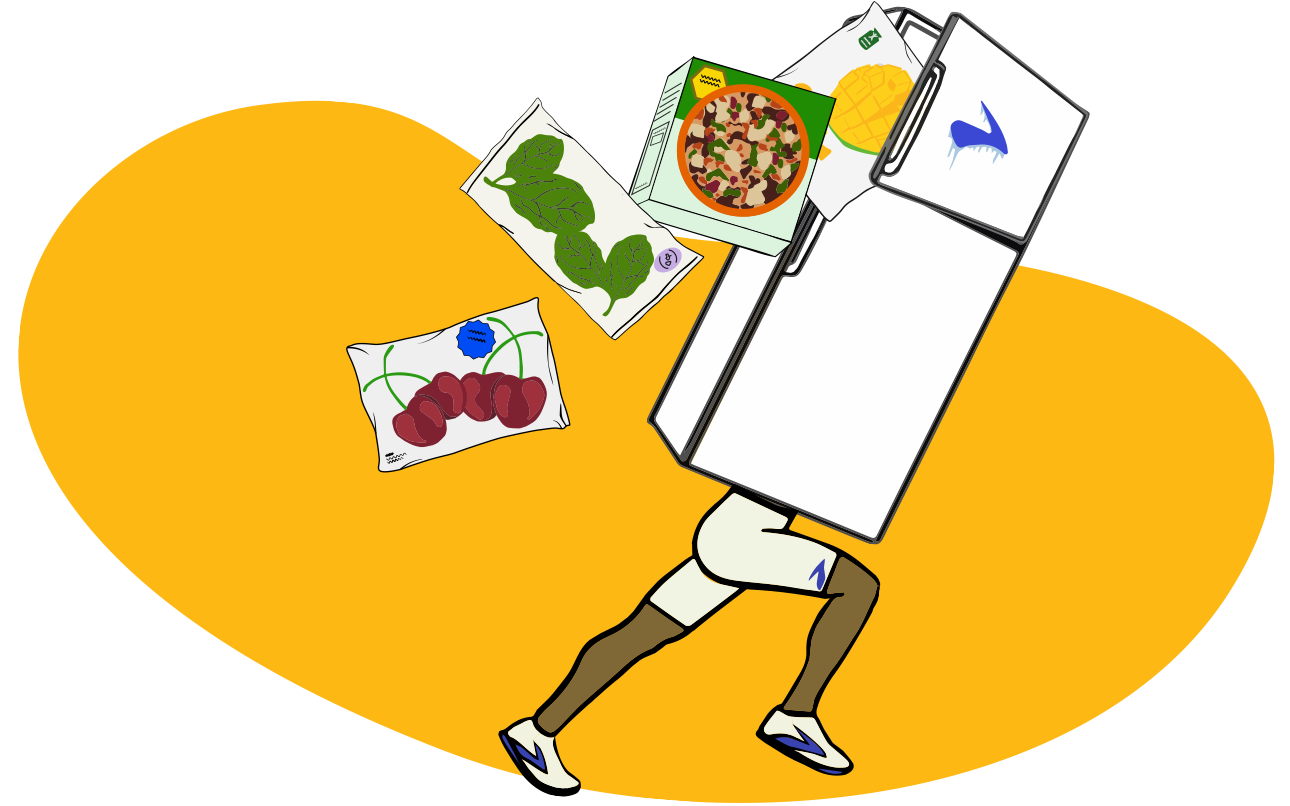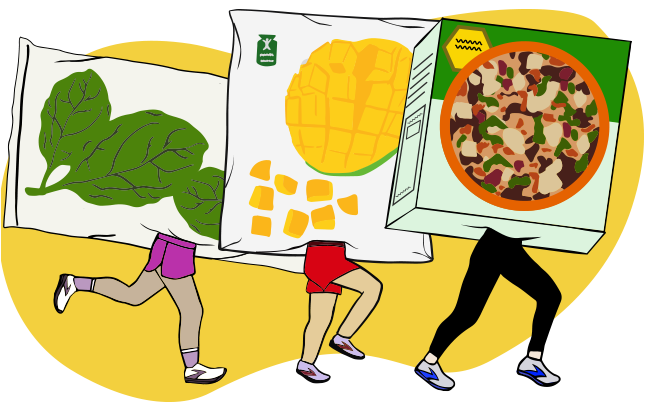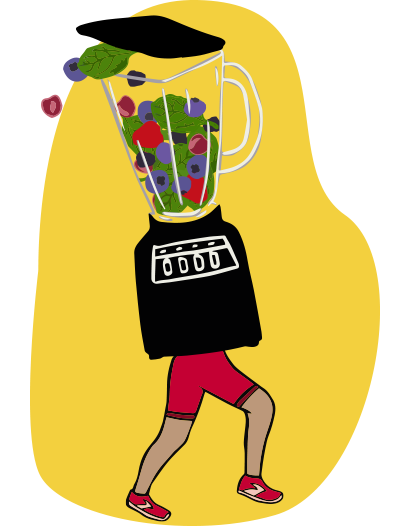Find runner nutrition in the frozen food section

A nutrition advisor for the Brooks Beasts discusses the right way to fuel yourself from your grocery store’s frozen aisle.
Brooks Beast Team


When you think about nutrition for runners, it’s easy to conjure up bales of fresh, organic produce, pasture-raised proteins, and well-organized containers of perfectly prepped meals. But the reality for most of us is that time and energy aren’t commodities we often have at our disposal. That doesn’t mean a quick trip to the drive-thru is the answer for your meals, either.
They key for choosing meals, whether they be fresh or frozen, according to Dr. Kyle Pfaffenbach, comes down to the basics of knowing how many macros you need.
The professor in the Health and Human Performance program at Eastern Oregon University and advisor to Brooks Beasts also recommends as much variety as possible in your vegetables when selecting your frozen meals. That means picking a meal that has plenty of colors in it.
“The first consideration is macronutrient needs, and I like to calculate these in grams. There are macro gram recommendations based on body size for protein, fat, and carbs. Grams are easier to track than calories. I usually start with protein and fat to make sure these are sufficient, and then modulate carbs based on upcoming workouts (i.e. more carbs if I have a long run or hard workout coming up) ” he said.

How to smoothie
Dr. Pfaffenbach said that he and his family typically use their freezer more as storage for proteins, but he keeps frozen fruit on hand for the occasional smoothie. The difference between frozen and fresh fruits and vegetables is likely minimal, he said. But, there is a caveat.
“There have been some analyses to suggest that flash frozen fruits and vegetables may have more nutritional value. Fruits and veggies that are flash frozen are allowed to stay on the vine longer and are usually more ripe when picked. Freezing allows for the preservation of vitamins, minerals, and micronutrients.”
Using frozen veggies in a smoothie can be okay but mixing it up is key. On a related note, Dr. Pfaffenbach explained that drinking your food is usually less preferred to eating it.
“One can consume more calories than expected by drinking them, and smoothies do not usually make a person feel full, so there can be some drawbacks.”

Frozen facts
Here are three tips from Dr. Pfaffenbach to consider next time you plan on purchasing a frozen meal.
- On food labels, macronutrients are reported in grams. So, if a person knows their goals for grams of protein, fat, and carbs, it is very easy to look at and track macro intake. This is easier and more effective than calculating and tracking calories.
- Always look at the ingredients list, especially if eating packaged food. Check for high fructose corn syrup, trans-fats, partially hydrogenated oils, and other additives to avoid.
- Look for positive characteristics in your labels, including organic, antibiotic free, and free range.

Learn more
Feel like you can freeze out your hunger with a trip down the frozen food aisle? Just remember to stay hydrated, incorporate lots of fruits and vegetables into your diet, and choose nutrient-rich snacks like nuts and seeds instead of potato chips.
Explore our Run Happy Blog for training plans and workouts, gear updates, inspiring stories from the run community, and much more.
DISCLAIMER: THIS ARTICLE DOES NOT PROVIDE MEDICAL ADVICE
The content in this post is intended for informational or general educational purposes only and it is not intended to be a substitute for professional medical advice, diagnosis, or treatment. Always seek the advice of your physician or other qualified health care provider with any questions you may have regarding a medical condition or treatment and before making any adjustments to your running, nutrition, fitness, or healthcare routines.